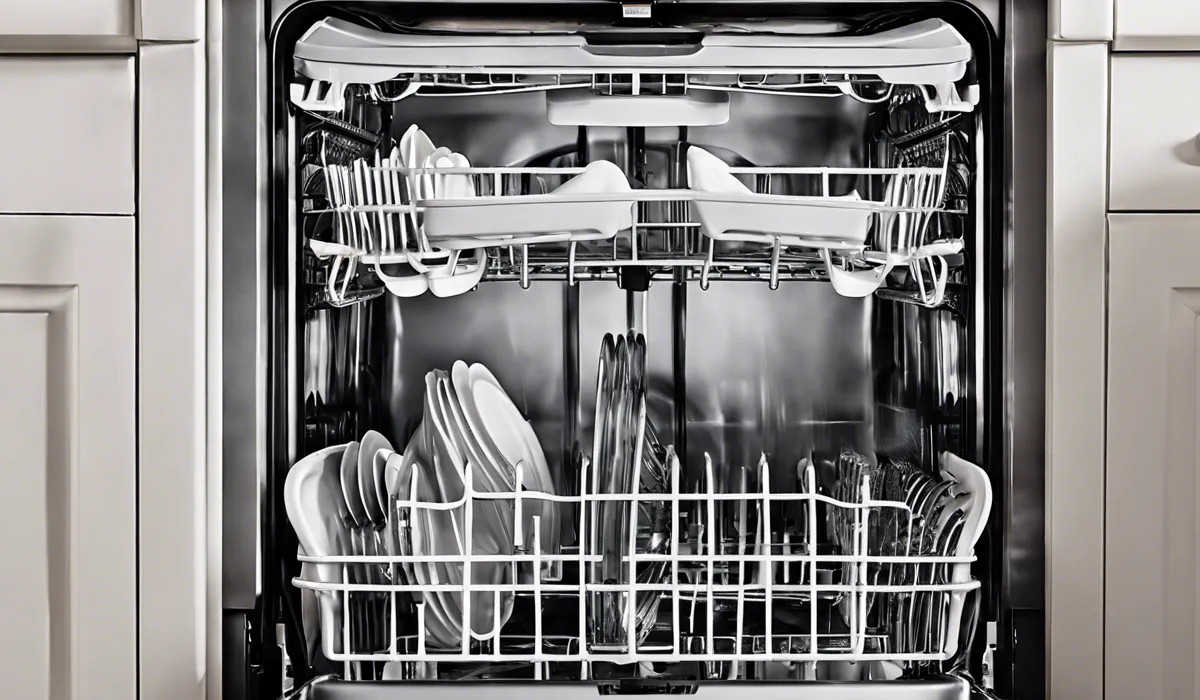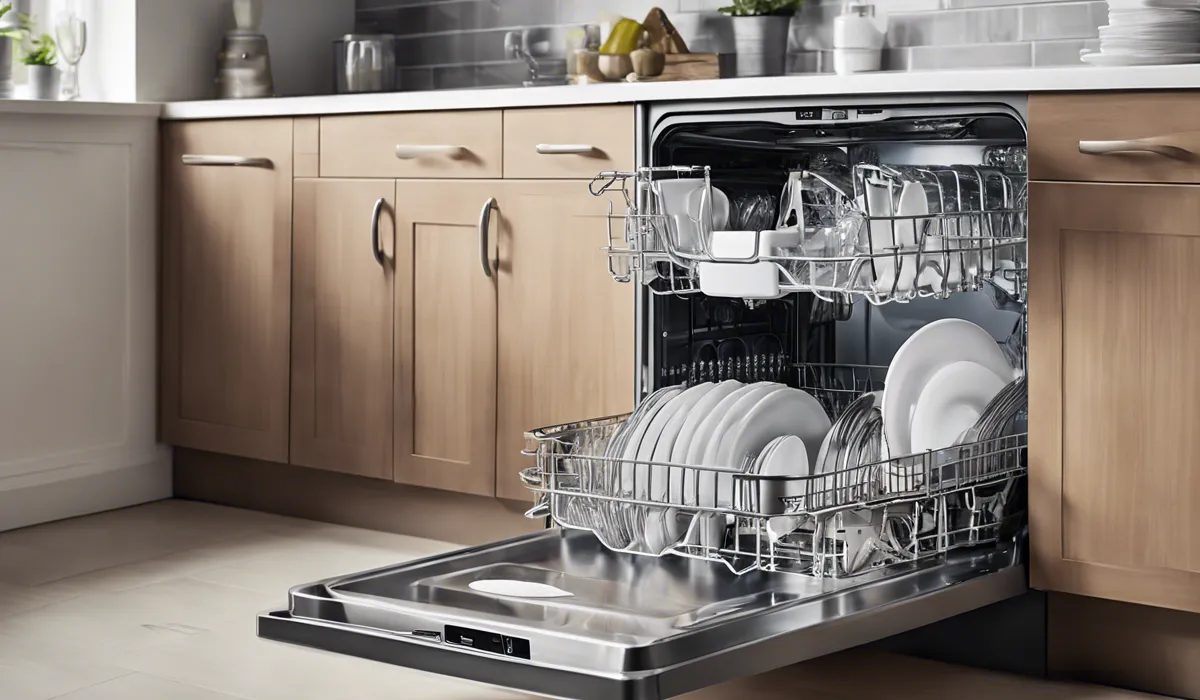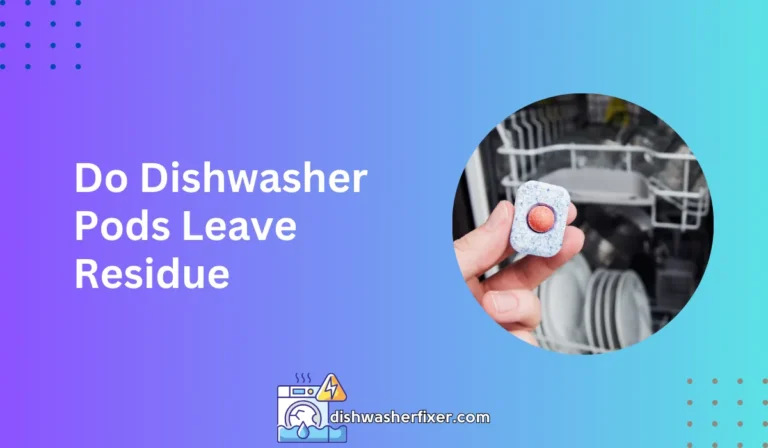How to Start a Dishwasher: A Step-by-Step Guide for Beginners
To start a dishwasher, first load your dishes and add detergent. Close the door firmly and select the desired wash cycle. Press the start button or switch to initiate the cycle. Wait for the dishwasher to begin operation.
Preparing Your Dishwasher

Inspect for Cleanliness
Before you start your dishwasher, take a moment to look inside. Make sure there is no leftover food, grease, or soap scum.
A clean dishwasher means cleaner dishes at the end of the cycle. Wipe down the walls and racks with a damp cloth if needed. The importance of a clean starting point cannot be overstated for the best results.
Check and Clear the Filter
The filter is crucial in keeping food particles from reattaching to your dishes. Locate your dishwasher’s filter, typically at the bottom of the machine, and remove any debris.
Rinse it under running water and put it back in place securely. A clean filter ensures effective water flow and better cleaning.
Strategic Dish Loading
Maximize your dishwasher’s performance by loading dishes strategically. Place plates on the bottom rack so they have direct access to the spray arms.
Glasses and bowls should go on the top rack, angled downward to prevent water pooling. Utensils should be mixed in the cutlery basket to avoid nesting and ensure thorough cleaning.
Ensure Free Movement
Before closing the dishwasher door, spin the spray arms to ensure they move freely. If they are obstructed, your dishes may not be cleaned properly. Reposition any item blocking the arms to ensure a full range of motion.
Add Rinse Aid
Rinse aid is a game-changer for spotless dishes. It helps water slide off your dishes more easily during the final rinse, preventing water spots. Fill the rinse aid dispenser according to the manufacturer’s instructions for best results.
Adding Detergent

Choose the Right Detergent
Select a detergent that is compatible with your dishwasher model. Whether it’s powder, liquid, or pods, make sure it’s designed for use in dishwashers. The right detergent will help you achieve clean, sparkling dishes.
Fill the Dispenser Correctly
Open the detergent dispenser and add the detergent according to the markings inside. Do not overfill as this can lead to residue on your dishes and in your machine. Close the dispenser firmly after filling.
Understand Detergent Amount
The amount of detergent you need depends on the size of your load and the soil level of your dishes. A smaller load or less soiled dishes may require less detergent. Use the recommended amount to avoid waste and ensure effectiveness.
Consider Water Hardness
If you live in an area with hard water, you may need to use more detergent or add a dishwasher salt to soften the water. Softened water helps the detergent work more effectively and prevents mineral buildup in your machine.
Starting Your Dishwasher

Select the Wash Cycle
Choose a wash cycle that suits the soil level of your dishes. For everyday dishes, a normal cycle is usually sufficient. For heavily soiled items, consider a heavy-duty cycle. If you’re conscious about energy use, select the eco-friendly option.
Set Additional Options
Some dishwashers offer additional options like high temperature or delay start. These can be useful for sanitizing dishes or running the dishwasher at a more convenient time. Select any additional options before starting the cycle.
Close the Door Securely
Make sure the door is closed firmly. A properly latched door is essential for the dishwasher to operate. If the door is not latched, the dishwasher will not start.
Start the Dishwasher
Press the start button or flip the switch to begin the cycle. It’s a good idea to stay nearby for the first few minutes to ensure everything is running smoothly. Listen for the sound of water filling the machine and the spray arms beginning to rotate.
Troubleshoot Non-Starting Issues
If your dishwasher does not start, check to make sure it’s properly plugged in and that the circuit breaker hasn’t tripped.
Ensure that the door is securely latched and that the start button has been fully pressed. If it still doesn’t start, consult the manual or contact a professional for assistance.
FAQs About Starting a Dishwasher
FAQ Question: How do I properly load a dishwasher before starting it?
FAQ Answer: To properly load a dishwasher, place dishes with soiled surfaces facing the spray arms, avoid overlapping or nesting, and ensure that utensils are placed in the cutlery basket with some handles up and some down to prevent nesting.
FAQ Question: What type of detergent should I use in a dishwasher?
FAQ Answer: Use a detergent specifically designed for dishwashers, such as powder, liquid, or single-dose pods, and avoid using regular dish soap as it can cause suds and overflow.
FAQ Question: How do I select the correct wash cycle on a dishwasher?
FAQ Answer: Choose a wash cycle based on the type of dishes and the level of soil; for example, use a heavy cycle for pots and pans or a light cycle for delicate glassware.
FAQ Question: What should I do if the dishwasher doesn’t start after pressing the start button?
FAQ Answer: Ensure the door is closed firmly, check if the dishwasher is properly plugged in and that there is no power outage, and confirm that the control lock or child lock feature is not activated.
FAQ Question: How long should I wait for the dishwasher to begin operation after starting it?
FAQ Answer: The dishwasher should begin the cycle immediately or within a few minutes after pressing the start button, depending on the model and cycle selected.
Final Thoughts
Starting a dishwasher involves a few simple steps: load the dishes, add detergent, and ensure the door is securely closed.
Next, choose your preferred wash cycle. Finally, activate the dishwasher by pressing the start button or switching it on. Once initiated, the machine will commence its cleaning process.





